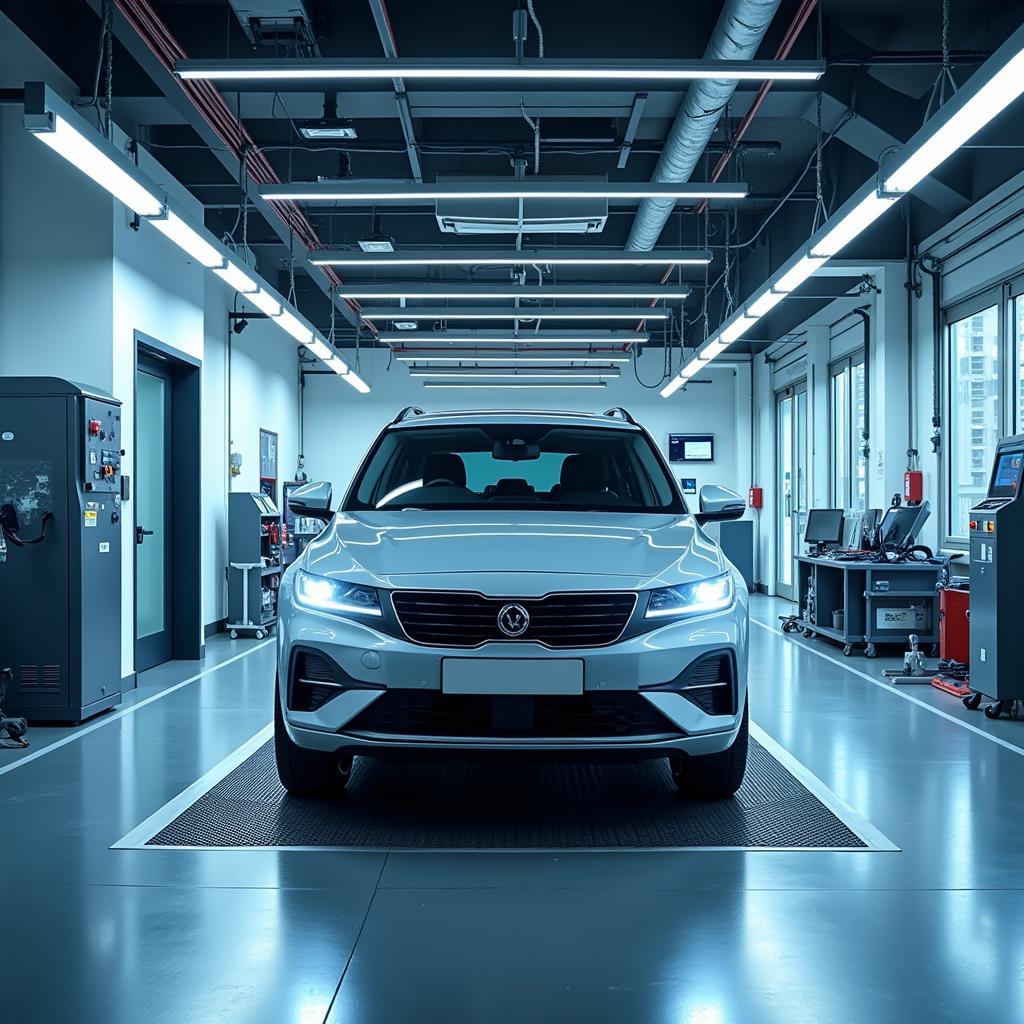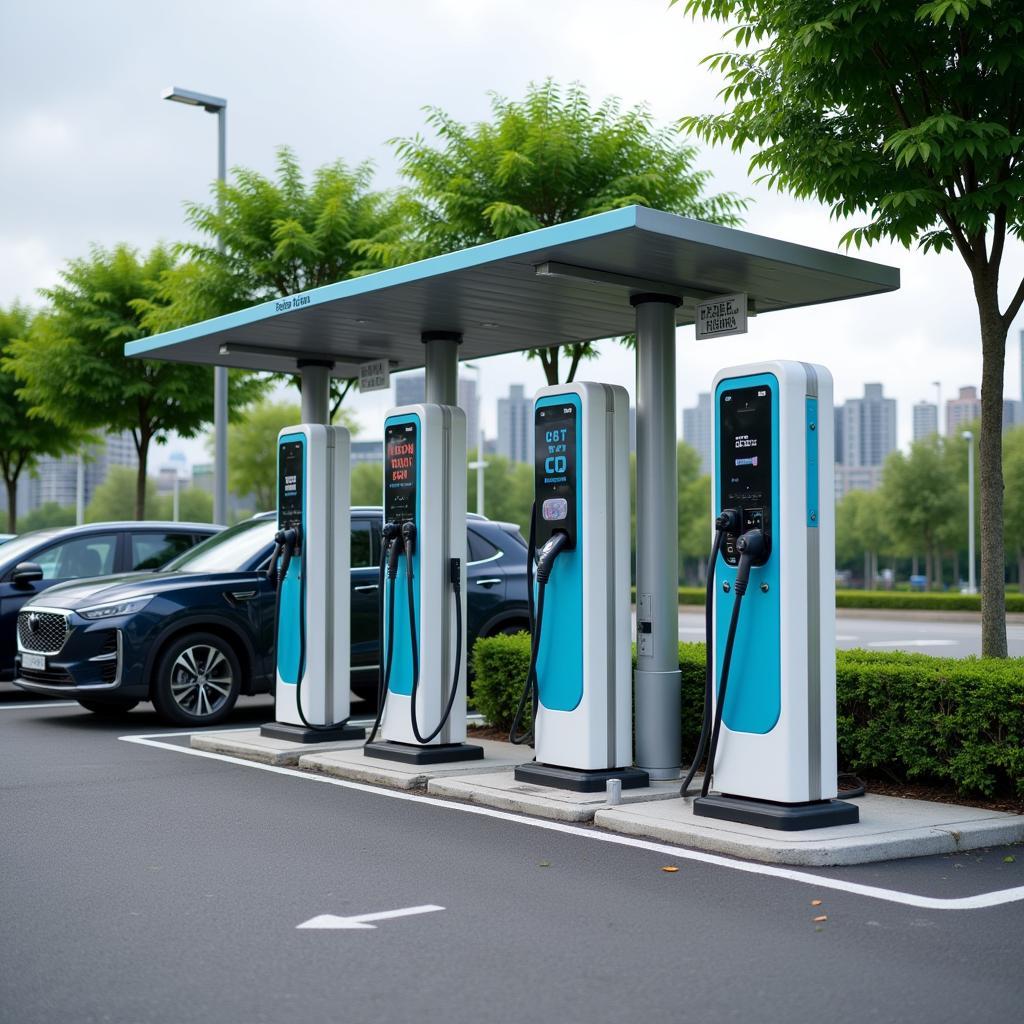The ASEAN A6 standard outlines the safety and performance requirements for electrical and electronic systems in motor vehicles. This standard, crucial for ensuring vehicle safety and harmonizing automotive regulations within the ASEAN region, covers a wide array of components and systems, impacting everything from engine control units to lighting systems.
The Importance of ASEAN A6 in Vehicle Safety and Harmonization
The ASEAN A6 standard plays a critical role in enhancing the safety and reliability of vehicles within the ASEAN market. By setting forth specific technical requirements for electrical and electronic systems, the standard aims to:
- Minimize electrical hazards: A6 addresses potential risks such as short circuits, overloads, and electromagnetic interference, ensuring the safe operation of electrical components.
- Ensure compatibility and interchangeability: Standardized components and systems promote compatibility across different vehicle makes and models, simplifying maintenance and repair.
- Facilitate trade and economic growth: Harmonized regulations within ASEAN streamline the import and export of vehicles, fostering economic cooperation and growth within the region.
 ASEAN A6 Testing Facility
ASEAN A6 Testing Facility
Key Areas Covered by ASEAN A6
The ASEAN A6 standard encompasses a broad range of electrical and electronic systems, including but not limited to:
- Battery Management Systems: Regulations cover battery safety, performance, and charging systems in electric and hybrid vehicles.
- Electronic Stability Control (ESC): This crucial safety system helps drivers maintain control of their vehicles in emergency situations. A6 sets standards for ESC performance and functionality.
- Lighting Systems: From headlamps and taillamps to turn signals and hazard lights, A6 outlines requirements for visibility and signal clarity.
- Electromagnetic Compatibility (EMC): The standard sets limits on electromagnetic emissions from vehicles and ensures that electronic systems are immune to interference.
Benefits for Consumers and the Automotive Industry
The implementation of the ASEAN A6 standard brings numerous benefits to both consumers and the automotive industry:
For Consumers:
- Improved safety: A6 contributes to safer vehicles, reducing the risk of accidents caused by electrical failures or malfunctioning systems.
- Enhanced reliability: Standardized components and systems enhance the overall reliability and longevity of vehicles.
- Wider choice: Harmonized regulations make it easier for manufacturers to introduce a wider variety of vehicle models to the ASEAN market.
For the Automotive Industry:
- Streamlined production: Standardized requirements simplify the design and manufacturing process, reducing costs and lead times.
- Increased market access: Vehicles complying with A6 can be more easily exported and sold within the ASEAN region.
- Enhanced competitiveness: The standard drives innovation and technological advancements within the automotive sector.
 Electric Vehicle Charging Station
Electric Vehicle Charging Station
ASEAN A6: A Catalyst for Automotive Innovation
Beyond immediate safety and economic benefits, the ASEAN A6 standard serves as a catalyst for continuous innovation within the automotive industry. As the standard evolves to incorporate advancements in vehicle technology, it encourages manufacturers to develop and implement cutting-edge electrical and electronic systems. This includes areas such as:
- Advanced Driver-Assistance Systems (ADAS): A6 plays a crucial role in regulating the safety and performance of ADAS technologies like lane departure warning, adaptive cruise control, and autonomous emergency braking.
- Connected and Autonomous Vehicles (CAVs): As CAV technologies advance, A6 provides a framework for regulating the complex electrical and electronic systems crucial for their operation.
- Cybersecurity: With the increasing integration of software and connectivity in vehicles, A6 addresses the critical need for cybersecurity measures to protect against potential threats.
Navigating ASEAN A6: Resources and Support
For manufacturers, importers, and other stakeholders in the automotive industry, understanding and complying with the ASEAN A6 standard is essential. Resources and support are available to guide businesses through the process, including:
- ASEAN Secretariat: Provides access to official ASEAN documents and information related to technical regulations.
- National Standards Bodies: Each ASEAN member state has its own national standards body that provides guidance and support for businesses seeking compliance.
- Technical Consultancies: Specialized firms offer expertise in automotive regulations and can assist with testing, certification, and compliance.
Conclusion: ASEAN A6 – A Foundation for a Safer, More Connected Automotive Future
The ASEAN A6 standard represents a crucial step towards harmonizing automotive regulations and enhancing the safety and performance of vehicles within the ASEAN region. As the automotive industry continues to evolve with advancements in electric, connected, and autonomous technologies, A6 will play an increasingly vital role in ensuring a safer, more sustainable, and technologically advanced automotive future for Southeast Asia.
FAQs about ASEAN A6
1. Who does ASEAN A6 apply to?
ASEAN A6 applies to manufacturers, importers, and distributors of motor vehicles intended for sale within the ASEAN region.
2. What are the penalties for non-compliance with ASEAN A6?
Penalties for non-compliance vary by country but may include fines, import restrictions, or product recalls.
3. How often is the ASEAN A6 standard updated?
The ASEAN A6 standard is reviewed and updated periodically to reflect advancements in vehicle technology and safety standards.
4. Are there any exemptions to the ASEAN A6 requirements?
Certain specialized vehicles or components may be exempt from specific ASEAN A6 requirements. It’s crucial to consult the official regulations for detailed information.
5. How can I learn more about specific testing procedures and requirements outlined in ASEAN A6?
Detailed information regarding testing procedures and requirements can be found in the official ASEAN A6 documentation available through the ASEAN Secretariat or relevant national standards bodies.
For further assistance, please contact:
Phone Number: 0369020373
Email: [email protected]
Address: Thôn Ngọc Liễn, Hiệp Hòa, Bắc Giang, Việt Nam.
Our dedicated customer support team is available 24/7 to assist you with any inquiries. You can also find helpful resources on our website, including information on ASE certification in Akron, Ohio, ASE auto mechanic certification, ASE diesel mechanic school, and the ASE exhaust test. For those preparing for the ASE L3 exam, our ASE test prep L3 resources can be valuable.
